Sukhothai
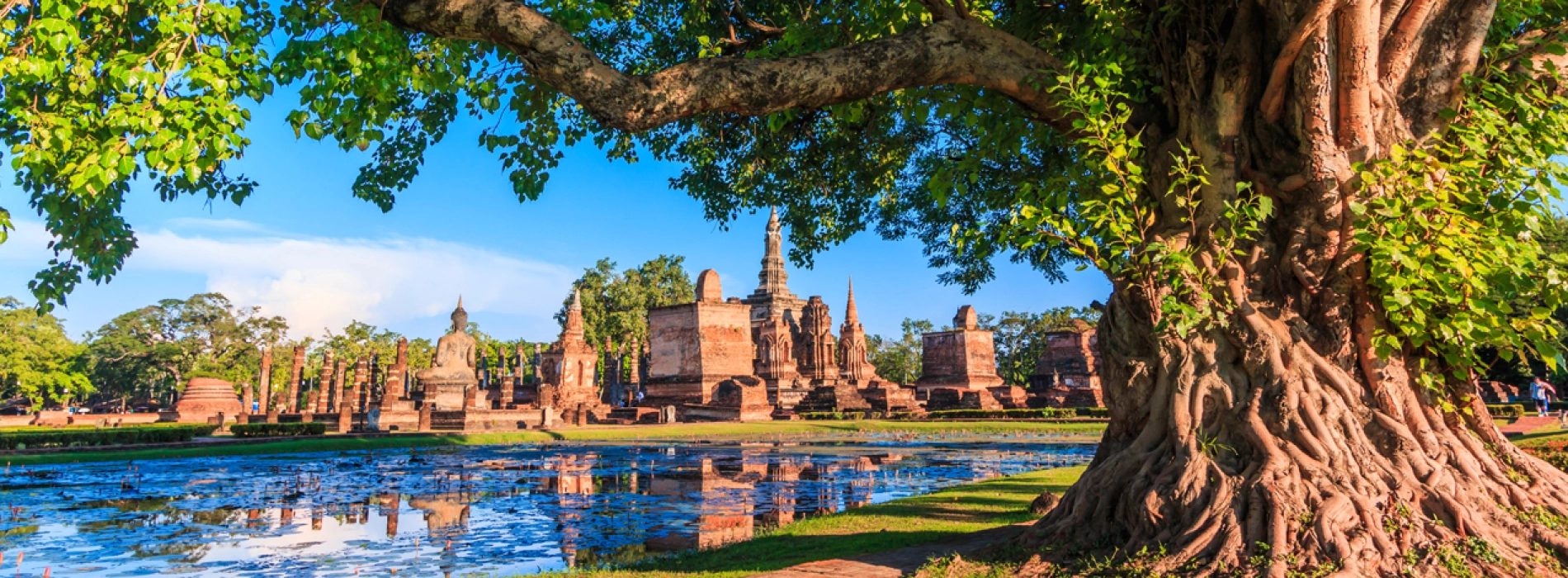
Located in northern Thailand, Sukhothai is a small but irresistible gem that silently calls on any traveller to pursue the tapestry full of history inside this Asian nation. This capital of the first Thai Kingdom, Sukhothai—the so-called UNESCO world heritage site—is filled with ancient ruins and historical artefacts that plunge a visitor back into past eras.
Given its great historical importance, Sukhothai provides an equally good mix of cultural and outdoor experiences. Let Asia King Travel guide you through them!
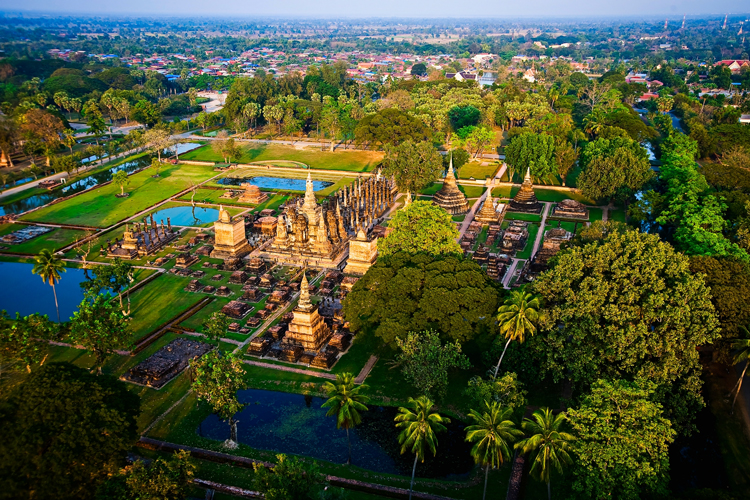
Sukhothai Historical Park - the architectural marvels and cultural heritage.
The first independent Thai kingdom to be established in the 13th century was that of Sukhothai. Under the great and charismatic King Ramkhamhaeng, it was founded in 1238 and became a place of great cultural importance, followed by material success for the realm.
Thus it was, in the tremendous number of religious monuments and architectural wonders, how the culture of prosperity and richness in Sukhothai province was reflected. Among these temples, minute details and expressions could be found in the iconic Wat Mahathat and Wat Si Chum from the Sukhothai era.
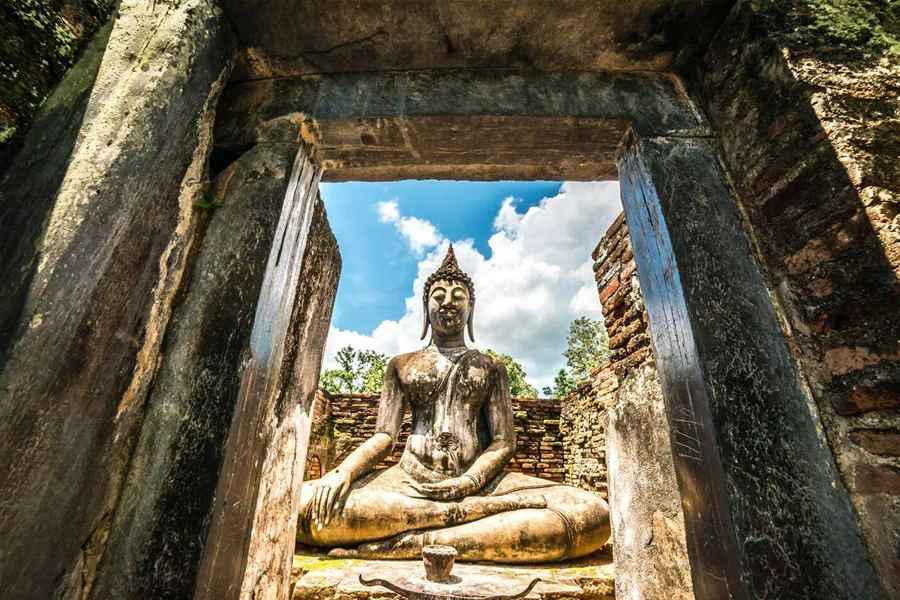
The giant Buddha statue at Wat Si Chum, Sukhothai
By the late 14th century, it began to decline and was finally toppled by the new rising power of the Ayutthaya Kingdom. The power and the fall of Sukhothai, the political fall, the cultural impact that had been made and guided the style in content of art and building that nation for many years forth to be imprinted in the annals of the history of Thailand.
You may also like: Trip 4 days in Center Thailand: Bangkok - Ayutthaya
The ideal time of the year to visit Sukhothai would be during the dry season. Temperatures are just right to be spent inside the historical park and outside. As temperatures drop and the air gets dry, the weather improves for sightseeing. In that kind of setting, you will enjoy even more the ancient ruins and other picturesque scenes.
Though the dry season undoubtedly looks like the best period to visit the area, it is equally proper to consider that this represents the highest tourist activity in a year, and thus crowded spots and high-season prices for accommodation. If you wish to skip the crowds and maybe obtain a little price break, try targeting a visit during the shoulder seasons of October-November or March-April.
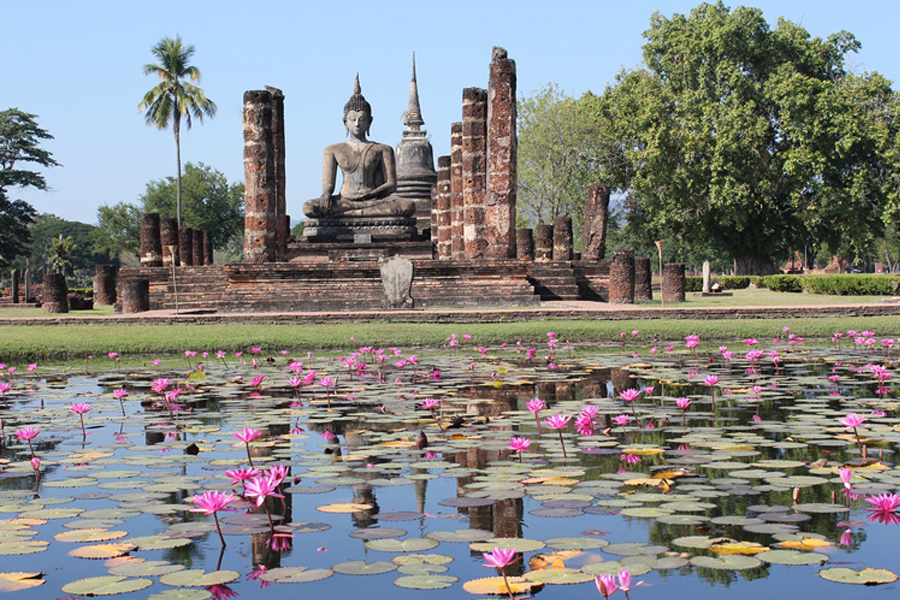
Picturesque and peaceful lotus pond in Wat Mahathat, Sukhothai
Sukhothai lies in the core of Northern Thailand, some 427 kilometres off Bangkok. The city is relatively easily accessible by major cities around the country, thus allowing travellers to visit it from any part of the country or overseas.
Since that is so, most people would rather fly to Sukhothai. The nearest airport available would be Sukhothai Airport, which directly serves flights from Bangkok's Don Mueang International Airport and Chiang Mai International Airport. They can also land at larger nearby airports, for example, Phitsanulok or Lampang, and then take a connecting bus to Sukhothai or organise a private transfer.
Those who like to see more should travel by train or bus. Trains from Hua Lamphong Station connect Bangkok with Phitsanulok quite frequently, and it is just a short bus ride or taxi trip to Sukhothai. It's very easy to get direct buses to the old city from Bangkok's Mo Chit Bus Terminal and Chiang Mai's Arcade Bus Station at an affordable price.
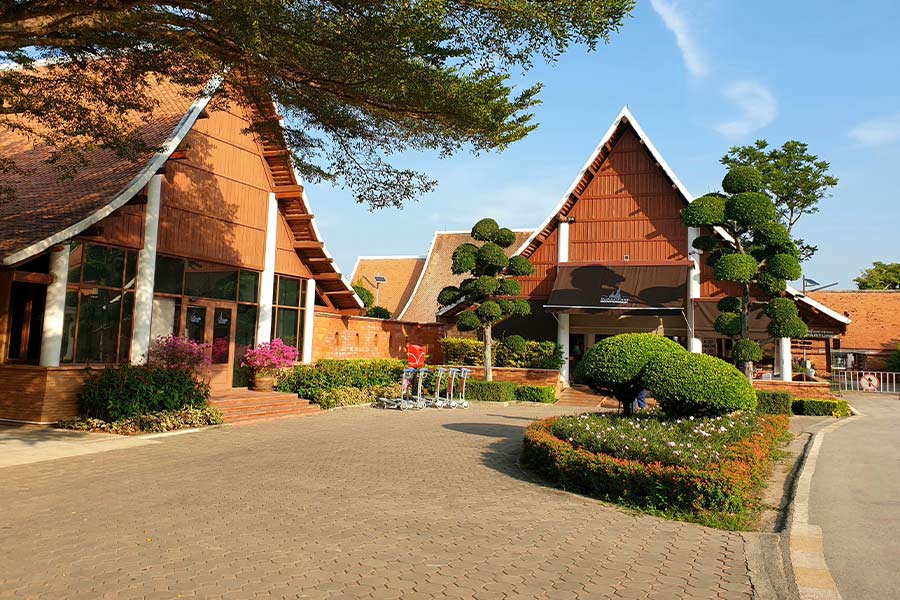
Sukhothai Terminal (Credit:Jatupoom Marungruang)
The Sukhothai Historical Park is a site that was justified by the status and classification of UNESCO as a World Heritage Site, bearing testimony to a glorious past. It is 70 square kilometres in size, containing more than 200 ancient temples and ruins, dating to the 13th and 14th centuries, and well-maintained.
Right at the centre of the park stands the magnificent Wat Mahathat temple complex, which serves as the spiritual centre of the Sukhothai Kingdom. Within these premises can be found their emblematic Buddha statues sitting in Sukhothai style in the lotus position, maintaining a serene expression with minute details that make out the artistic conception of the kingdom.
Not far away, the adjacent Wat Si Chum boasts a Buddha image in Khmer style and is packed with stucco embellishment complexes that leave most people awestruck.
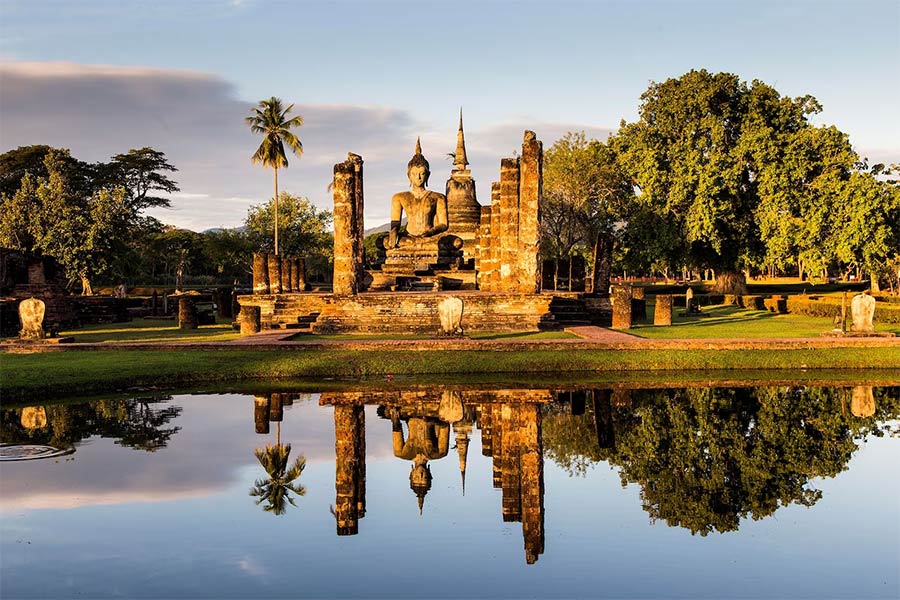
Sukhothai Historical Park (Credit: Dani Salva, VWPics/Redux)
Visiting this ancient kingdom is a wonderful way to immerse in Sukhothai's rich tapestry of culture. You can start at the lively local markets and skilled artisan workshops, where the skilled pottery makers are at work, or watch the intricate art of silk weaving. By all means, the local markets are like windows into the region's artistic heritage, showing you all the amazing things in the area.
If you really want to be swept away, you should check out one of the many amazing shows and performances that bring Thai dance, music, and theatre to life. You'll see classical Thai dancers dressed in elegant costumes, accompanied by traditional music inspired by a tale. The wonderful acts are not just displays of the country's artistic capabilities; they also reflect snippets of the local's vibrant history and folklore.
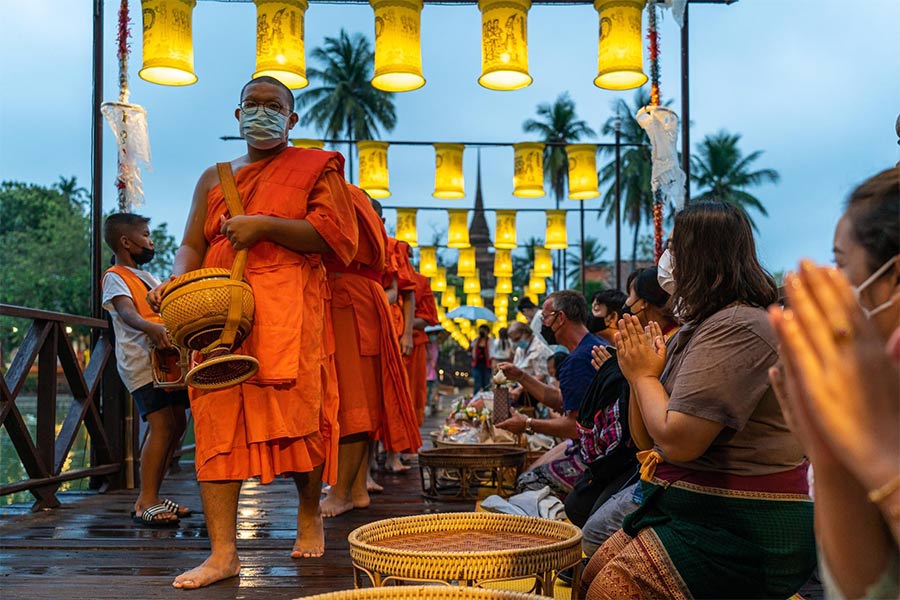
Traditional monks praying (Credit: World Heritage Journey)
Without a doubt, Sukhothai is one of the most rejuvenating places--life to things and lots of things were moved outside or equally dazzling historical sites.
Here comes an overwhelming journey to the heart of Thailand with such local artisan activities. From pottery, progress to the entire silk-making process with the village artisans. Make your own take-home gifts since this is the one and only place to do so.
Moreover, these national parks and waterfalls are magnificently beautiful. You can trail and take bites into dense forests or open to basins of cascading waterfalls and their glistening pools. Plus, you may swim in this refreshing experience that cleanses the soul. The great outdoors offer a serene escape and a return to nature.
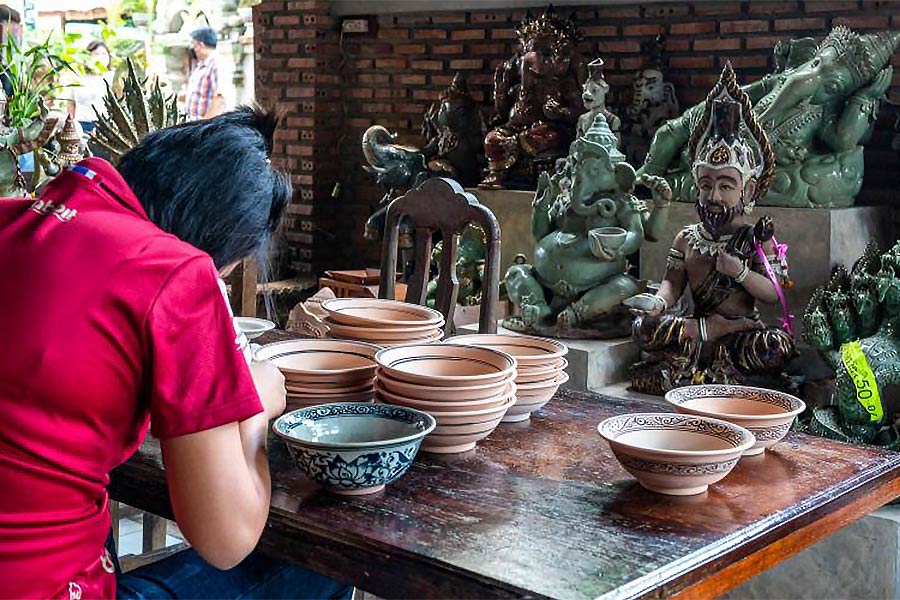
Traditional carving in Sukhothai (Credit: World Heritage Journey)
Sukhothai offers very varied ranges of accommodation that will suit every pocket and taste. The town is brimming with guesthouses and hostels at budget prices, promising a neat and comfortable stay at friendly rates. Most low-end options can be near or within walking distance of the Historical Park and other major attractions.
Besides, many such places are usually set against the backdrop of stunning traditional Thai architecture in beautiful gardens, and they often include swimming pools, spas, and fine dining.
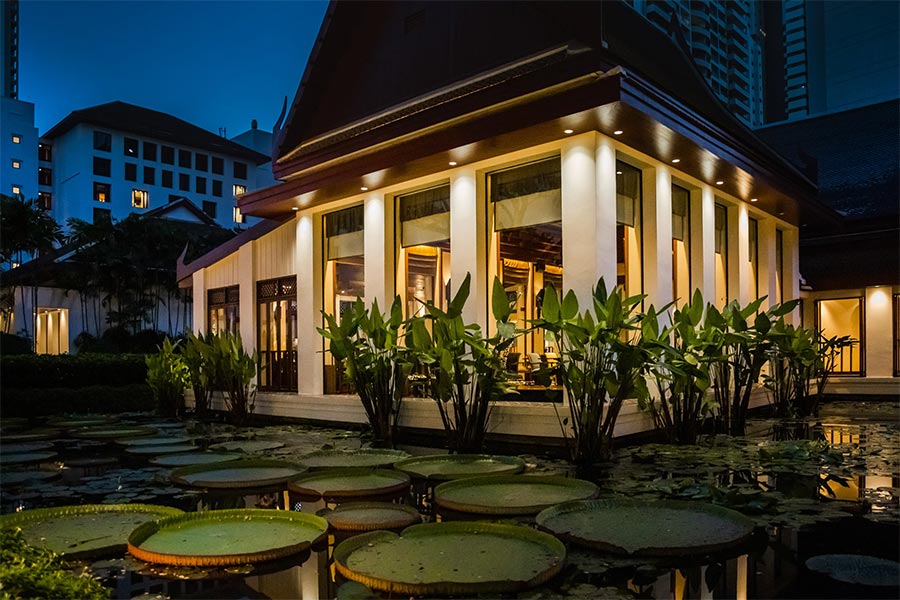
Hotel in Sukhothai (Credit: Brad A Johnson)
You'll definitely want to save a few extra days to fully experience and enjoy the incredible, authentic Thai dishes that Sukhothai has to offer. Take a wander down the streets, find a cosy spot, and tuck in! There's so much to try, from spicy curries to fragrant noodle dishes, fresh fruits, Thai desserts, and amazing treats from the hawker carts.
It's always a good idea to try some of Thailand's most famous dishes like Pad Thai, Som Tam, and Tom Yum Goong, that hot and sour shrimp soup!
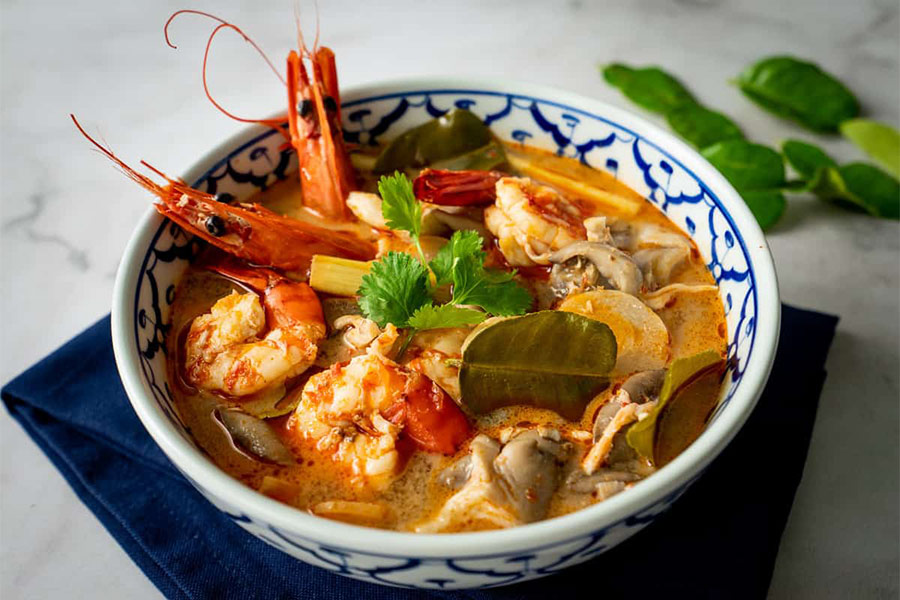
Tom Yum Goong (Credit: Freepik)
Sukhothai is picture-perfect in its combination of nature, history, and rejuvenation. If you are ready to discover Sukhothai and want to make sure your journey goes in line with sustainable travel practices, consider booking a trip with Asia King Travel. Let's turn your Thailand dreams into reality!
You may also like: Northeast Thailand Tour 8 days: Issan Discovery
Take the "Sukhothai Tour 3 Days 2 Nights: Explore Thailand Heritage". Insights i...
Discover the beauty of Thailand's ancient capital on the Sukhothai Tour 4 Days:...
Discover the charm of rural Thailand with our Sukhothai Tour 1 Day: Countryside...